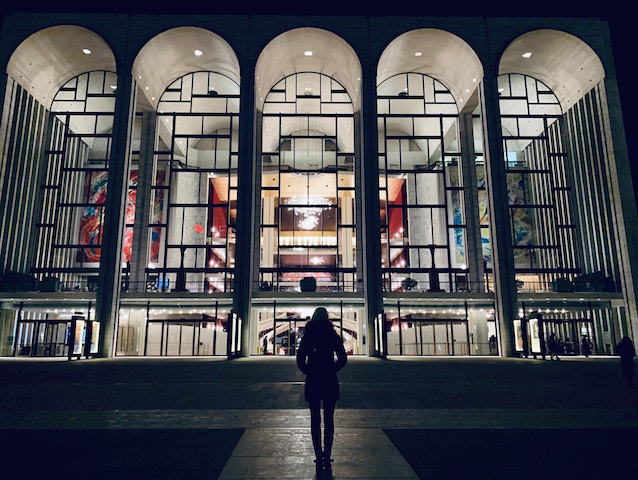When the New York World’s Fair opened in 1964, its long-lasting influence would not only extend to the far reaches of the nation, but it would also leave a lasting impact on one of New York City’s most iconic landmarks: Lincoln Center.
Although the World’s Fair was stationed in Flushing, Queens, Lincoln Center served as the official performing arts venue during the exposition’s run. Many may be surprised to learn that the arrangement itself was the impetus for creating Lincoln Center’s New York State Theater, later renamed the David H. Koch Theater in 2008.
While Lincoln Center and the World’s Fair became an important alliance in the history of the city, the story of the center’s creation also begins with an equally important relationship.
A Valuable Partnership
The partnership between the Fair and Lincoln Center can be traced back to September 1959.
Robert Moses, then Commissioner of New York City’s Department of Parks, suggested to John D. Rockefeller, the president of Lincoln Center for the Performing Arts (LCPA), that the center’s campus would make a more convenient locale for some of the festival’s performances — more so than the temporary buildings at Queen’s Flushing Meadows.
One reason to establish LCPA as a satellite site was to accommodate visitors while also offering theater-goers superior acoustics and the convenience of city nightlife. At first, Rockefeller seemed apprehensive about the proposal because Lincoln Center was only 113 days old with a campus that was still largely a field of turned dirt.
Fortunately, Rockefeller saw the mutual benefit in supporting supplemental programming for both the Fair and Lincoln Center. As a result, Reginald Allen was appointed Operations Director to oversee plans for the development project, which would eventually create Lincoln Center’s now-famous theaters that hosted the World’s Fair programming. While not completed until the late 1960s, the Metropolitan Opera House and The Juilliard School were constructed in anticipation of the event.
Funding a Future Cultural Center
By 1960, the New York State Governor, Nelson Rockefeller, saw the advantages of constructing new performance buildings and started to seek state funding for the project. LCPA itself sought $15 million in grants, which New York state was ready to approve as long as the city matched its contribution. The investment would cover the cost of construction for the Theater for Dance, while the residual funds would be later applied to the Library Museum.
In 1961, the New York State Legislature passed a bill to provide funding for the Theater for Dance, now called the David H. Koch Theater, and by mid-April the World’s Fair Commission and the LCPA officially agreed that Lincoln Center would be the Fair’s main host for opera, symphonies, ensemble music, ballet and theater.
However, the project still had one more obstacle to overcome. During the announcement for the state legislation, General Maxwell D. Taylor, the LCPA’s president, lamented that New York City had not yet established the support to match the state’s contribution. Luckily, his hopeful speech fostered the diligence and patience needed to generate the City Council’s approval in August 1962.
A Landmark is Born
With this new funding, a cultural center was born that would help to advance New York as a theater city, differentiating it from the cabaret and Broadway shows it had so closely been admired for over the previous decades.
During the World’s Fair, the center hosted programs that marked William Shakespeare’s 400th birthday and featured an impressive lineup of international and domestic performances.
After the event, the bulk of the programming between 1964 and 1965 was credited to the New York City Ballet, which opened with a performance of Stars and Stripes in the New York State Theater (Koch Theater) on April 23, 1964.
Today, the David H. Koch Theater has stood for over five and a half decades, bringing in 5 million visitors each year and hosting some of Lincoln Center’s main attractions that serve as a nexus for excellence in dance and performing arts. From traditional Chinese dances to jazz and gospel performances, the venue continues to showcase the global heritage originally promoted during the 1964 World’s Fair. Thanks to the advent of this major historic event, we have a permanent icon that offers a rich artistic heritage and identity for New Yorkers and a cultural touch point for audiences all around the world.
